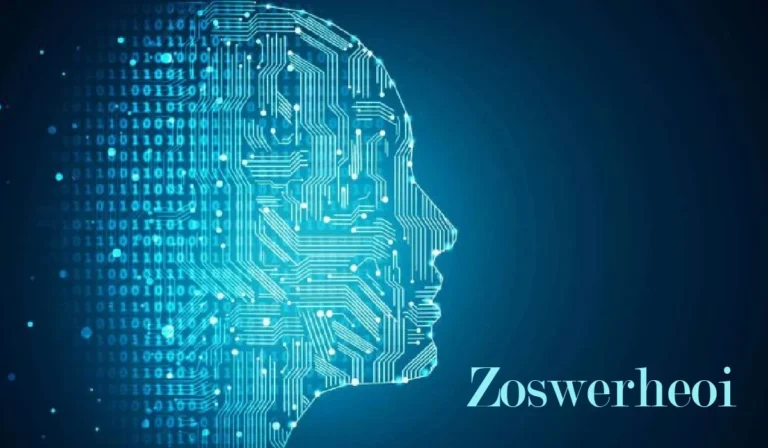In the vast digital ecosystem, strings of seemingly random characters like zoswerheoi often appear in system logs, authentication protocols, or encoded data transmissions. At first glance, such terms appear meaningless—just a jumble of letters without obvious structure. Yet, these alphanumeric sequences frequently serve critical functions in modern computing, from securing sensitive information to enabling machine communication. This article explores the potential origins, applications, and significance of zoswerheoi, examining its possible roles in cybersecurity, software development, and data science. By analyzing its structure, linguistic patterns, and technical context, we can uncover whether it represents an encrypted message, a unique identifier, or something more complex lurking beneath the surface of our digital interactions.
Linguistic Breakdown: Does Zoswerheoi Follow Any Recognizable Pattern?
When examining zoswerheoi from a linguistic perspective, several intriguing characteristics emerge. The term consists of nine lowercase letters with a distinctive vowel-consonant alternation (o-e-e-o-i), creating a somewhat pronounceable but nonsensical arrangement. Unlike recognizable acronyms or portmanteaus, it doesn’t immediately suggest a hidden meaning in English or other common languages. However, its structure resembles auto-generated strings produced by algorithms for unique IDs or placeholder text. The absence of numbers or special characters might indicate it was manually constructed rather than randomly generated, possibly as a placeholder in a development environment or a temporary access code. Alternatively, it could be a cipher—a substitution-based encryption where each letter corresponds to another in a hidden pattern. Without additional context, determining whether zoswerheoi follows a linguistic rule remains speculative, but its construction hints at intentional design rather than pure randomness.
Technical Applications: Where Could Zoswerheoi Be Used?
In computing, strings like zoswerheoi serve numerous purposes depending on their context. One possibility is that it functions as a session token in web authentication, temporarily granting a user access to a system without exposing credentials. Another interpretation positions it as a unique identifier in a database, distinguishing records in a way that avoids naming conflicts—common in distributed systems like blockchain or NoSQL databases. It might also be part of a file hash, a fingerprint used to verify data integrity in downloads or cybersecurity checks. Machine learning platforms sometimes generate similar strings as experiment IDs to track model iterations. If zoswerheoi appears in a URL, it could be a URL slug or a tracking parameter for analytics. The lack of capitalization or separators suggests it was generated by a system prioritizing compactness over readability, typical in backend processes where human interpretation is secondary to functionality.
Cryptographic Significance: Could Zoswerheoi Be Encrypted Data?
The field of cryptography offers compelling insights into what zoswerheoi might represent. Unlike Base64-encoded strings (which often end with “=”) or hexadecimal codes (which use 0-9 and A-F), this term doesn’t conform to common encoding standards. However, it could still be ciphertext—the output of an encryption algorithm applied to an original message. Classical ciphers like Caesar or Vigenère transforms might produce such output if given a specific key. Alternatively, zoswerheoi could be part of a key derivation function, where a system generates it from a password to enhance security. Modern cryptographic protocols frequently create human-unfriendly strings like this to ensure unpredictability, making them resistant to brute-force attacks. If discovered in a security log or network packet, it might warrant deeper inspection to rule out malicious payloads or exfiltrated data disguised as benign text.
Security Implications: Should You Be Concerned About Zoswerheoi?
Encountering an unfamiliar string like zoswerheoi in system files, logs, or network traffic can raise valid security questions. If it appears unexpectedly, several scenarios could explain its presence. On the benign side, it might be a harmless auto-generated identifier from legitimate software. More concerning possibilities include:
- Malware signatures: Some viruses embed unique strings in infected files to communicate with command servers.
- Obfuscated code: Hackers often mask malicious scripts with meaningless labels to evade detection.
- Data exfiltration markers: Stolen information might be tagged with such strings for later retrieval.
Best practices recommend scanning the environment where zoswerheoi was found, checking for associated processes, and comparing it against threat intelligence databases. If it appears in memory dumps or suspicious network traffic, further forensic analysis may be necessary to determine whether it poses a risk.
Real-World Analogies: Similar Strings and Their Meanings
To better understand zoswerheoi, examining comparable strings with known purposes can provide clarity. For example:
- Git commit hashes (e.g.,
a1b2c3d) uniquely identify code changes. - UUIDs (e.g.,
f47ac10b-58cc-4372-a567-0e02b2c3d479) ensure global uniqueness for distributed systems. - API keys (e.g.,
sk_live_xyz123) authenticate software interactions.
Unlike these examples, zoswerheoi lacks the structured delimiters or predictable length of standardized IDs. This irregularity suggests it might be a custom implementation, perhaps internal to a specific platform or legacy system. Historical examples show that proprietary software often invents its own naming conventions, which may explain why this term resists immediate classification.
Conclusion: Embracing the Uncertainty of Digital Artifacts
The exploration of zoswerheoi underscores a fundamental truth about our digital world: not every string of characters will yield its secrets easily. While we’ve outlined plausible explanations—from cryptographic tokens to database keys—the term’s true meaning may only be known to the system or individual that created it. This ambiguity reflects the complexity of modern technology, where layers of abstraction often obscure underlying mechanisms. Rather than dismissing such anomalies, curious minds should document their context, analyze patterns, and remain open to discoveries that might reveal their purpose later. In an era where data permeates every aspect of life, learning to interrogate the unknown—even something as seemingly trivial as zoswerheoi—can cultivate valuable skills for navigating the evolving digital landscape.

